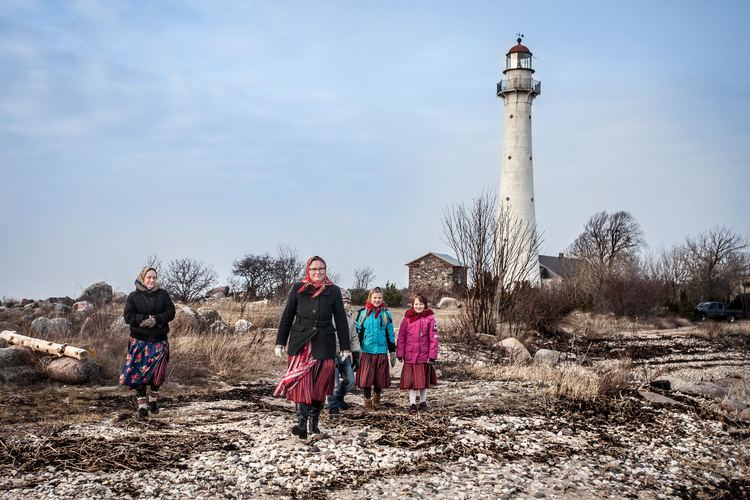- summer (DST) EEST (UTC+3) Postal code 88005 | Area 16.38 km² Municipality Kihnu Parish | |
 | ||
Kihnu island estonia
Kihnu (Swedish: Kynö) is an island in the Baltic Sea. With an area of 16.4 km2 (6.3 sq mi) it is the largest island in the Gulf of Riga and the seventh largest island of Estonia. The length of the island is 7 km (4.3 mi) and width 3.3 km (2.1 mi), the highest point is at 8.9 metres (29.2 ft) above sea level.
Contents
Map of Kihnu, P%C3%A4rnu County, Estonia
The island belongs to the Pärnu County of Estonia. Together with neighbouring islands it forms Kihnu Parish, one of the smallest municipalities of the country with an area of 16.8 km2 (6.5 sq mi).
604 people live on Kihnu as of 2007 of whom 69 are primary school pupils. There are four villages: Lemsi, Linaküla, Rootsiküla and Sääre. One can reach Kihnu by plane from Pärnu (15 minutes) or ferry from either Pärnu (3 hours) or Manilaid (1 hour), and when the sea is frozen in winter it is possible to drive to the island over the ice.
The kihnu cultural space
Culture
Kihnu's mittens, troi, "ülalistmine" and striped skirts are famous in many countries, especially among craftsmen and scientists.
UNESCO proclaimed Kihnu's cultural space and traditions as a Masterpiece of the Oral and Intangible Heritage of Humanity on November 7, 2003. The Baltic islands of Manija and Kihnu are home to a small group of traditional people. For many years, the men of Kihnu have been frequently gone to sea while the women ran the island and became the guardians of the island's cultural heritage, which includes handicrafts, dances, games and music. Music is an especially important part of the island's traditions, and accompanies handicrafts, religious feasts and other celebrations. Ancient runo-styled songs are also important, as are traditional clothings adorned with decorations and bright colours that symbolize ancient legends and poems. The people of Kihnu speak a dialect of Estonian which is sometimes considered to be a distinct language and contains many elements from Swedish.
